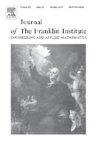Reversible Data Hiding for JPEG Images Based on Point Distortion Estimation Optimization
IF 3.7
3区 计算机科学
Q2 AUTOMATION & CONTROL SYSTEMS
Journal of The Franklin Institute-engineering and Applied Mathematics
Pub Date : 2025-03-21
DOI:10.1016/j.jfranklin.2025.107657
引用次数: 0
Abstract
Reversible data hiding (RDH) for joint photographic experts group (JPEG) images has been extensively studied to achieve a perfect balance between image visual quality and file size increment. In this paper, we propose RDH algorithm for JPEG images, optimized through point distortion estimation (PDEO). First, we construct a PDEO model that takes into account block smoothness, quantization step, and zigzag sorting position, and then arrange each AC coefficient in ascending order according to the point distortion estimate, because preferentially embedding in the AC coefficient with less distortion can obtain better image quality. Second, we design the principle of "pair when ±1 appears" to makes full use of ±1 coefficients to increase the embedding capacity. Finally, the secret data is embedded into the AC coefficient pairs by using our designed 1D and 2D histogram mapping generation strategy. Experimental results demonstrate that the proposed algorithm offers superior visual image quality compared to other advanced JPEG RDH algorithms, with a smaller increase in file size and a more optimal balance in runtime complexity.
求助全文
约1分钟内获得全文
求助全文
来源期刊
CiteScore
7.30
自引率
14.60%
发文量
586
审稿时长
6.9 months
期刊介绍:
The Journal of The Franklin Institute has an established reputation for publishing high-quality papers in the field of engineering and applied mathematics. Its current focus is on control systems, complex networks and dynamic systems, signal processing and communications and their applications. All submitted papers are peer-reviewed. The Journal will publish original research papers and research review papers of substance. Papers and special focus issues are judged upon possible lasting value, which has been and continues to be the strength of the Journal of The Franklin Institute.

 求助内容:
求助内容: 应助结果提醒方式:
应助结果提醒方式:


